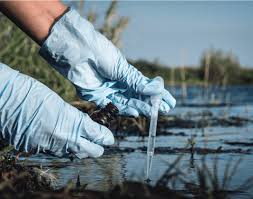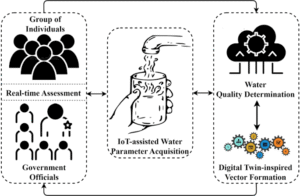Back to: ZOOLOGY 500 Level
Welcome to class!
Hello dear scholar! I’m really glad to have you here today. We’re going to talk about something every ecologist, environmental scientist, and conservationist in Africa must understand well—water quality assessment. Whether it’s the tap water in your home, the fish ponds in Ijebu, or the River Benue flowing past communities, assessing water quality helps us understand how safe, clean, and life-supporting our water sources are.
Water Quality Assessment
What is Water Quality Assessment?
Water quality assessment means evaluating the physical, chemical, and biological characteristics of water to determine whether it is healthy for people, animals, plants, and the entire ecosystem. Clean water is essential for drinking, farming, fishing, recreation, and maintaining biodiversity. But because of pollution—from industries, agriculture, oil spills, and waste disposal—many Nigerian water bodies are at risk. That’s why water quality assessment is so important.

Physical Parameters
These include aspects like temperature, colour, odour, turbidity (how clear or muddy the water is), and flow rate. For example, very turbid water in a stream in Enugu may indicate heavy erosion or pollution from nearby construction sites.
Tools like thermometers and turbidity meters help measure these physical aspects on-site during fieldwork.
Chemical Parameters
These involve substances dissolved in the water that can affect its quality. Common ones include:
pH: Measures acidity or alkalinity. Clean freshwater usually has a pH between 6.5 and 8.5.
Dissolved Oxygen (DO): Aquatic life like fish needs oxygen in the water to survive. Low DO may mean pollution.
Nitrates and Phosphates: High levels often come from fertilisers or waste and can cause harmful algal blooms.
Heavy metals: Such as lead or mercury from mining or industrial waste are dangerous to both humans and wildlife.
In the oil-producing areas of the Niger Delta, chemical tests are often used to check for hydrocarbon contamination in rivers and creeks.
Biological Parameters
Biological indicators include the presence of certain organisms that reflect water health. For example:
Mayfly or stonefly larvae indicate clean water.
Leech or bloodworms suggest polluted water.
Also, plankton diversity and bacteria counts like coliform bacteria help determine water safety.
This is where methods like kick sampling or plankton netting are useful, as you’ve already learned!
Why Water Quality Assessment Matters
Public health: Safe drinking water prevents disease outbreaks like cholera and typhoid.
Fisheries and agriculture: Poor water quality can harm crops and kill fish.
Wildlife conservation: Aquatic animals are sensitive to pollution.

Policy and management: Assessment data guide governments and communities to take action.
Example from Nigeria
In Kogi State, a water quality assessment conducted near a gold mining site revealed dangerously high mercury levels in a stream. This led to community education and intervention to protect both people and wildlife.
Summary
- Water quality assessment checks physical, chemical, and biological characteristics of water.
- Physical indicators include temperature and turbidity.
- Chemical indicators include pH, DO, nitrates, and heavy metals.
- Biological indicators involve the presence or absence of specific organisms.
- It’s essential for public health, environmental safety, and sustainable development.
Evaluation
- Mention two physical and two chemical indicators of water quality.
- Why is dissolved oxygen important in water bodies?
- How can the presence of leeches in water indicate pollution?
- Give one real-life application of water quality assessment in Nigeria.
You’ve just unlocked another vital skill in environmental science! You’re building the knowledge that will help protect lives, improve communities, and preserve our beautiful African ecosystems. Afrilearn is cheering you on—your future is bright and filled with impact!
